Avoid the solid and attack the empty, unity of knowledge and action.
If you want to change your fate against the sky in the traditional speculative market, there is nothing more than doing: buying early, buying low, and buying a lot. In the crypto world, rolling positions is almost the only way to quickly counterattack.
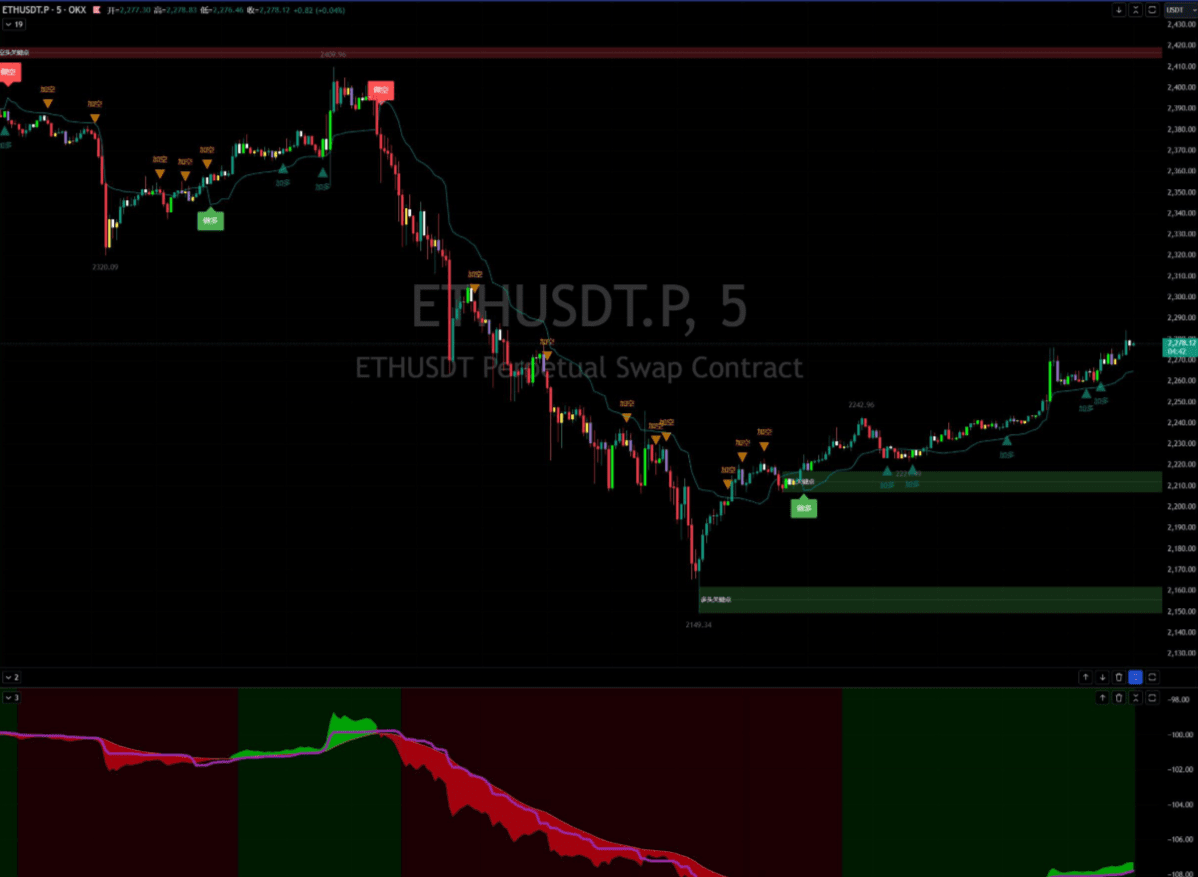
OKEx ETH perpetual contract, 5-minute market trend on September 7, small cycle volatility breakout strategy, immediate results, quickly take profits
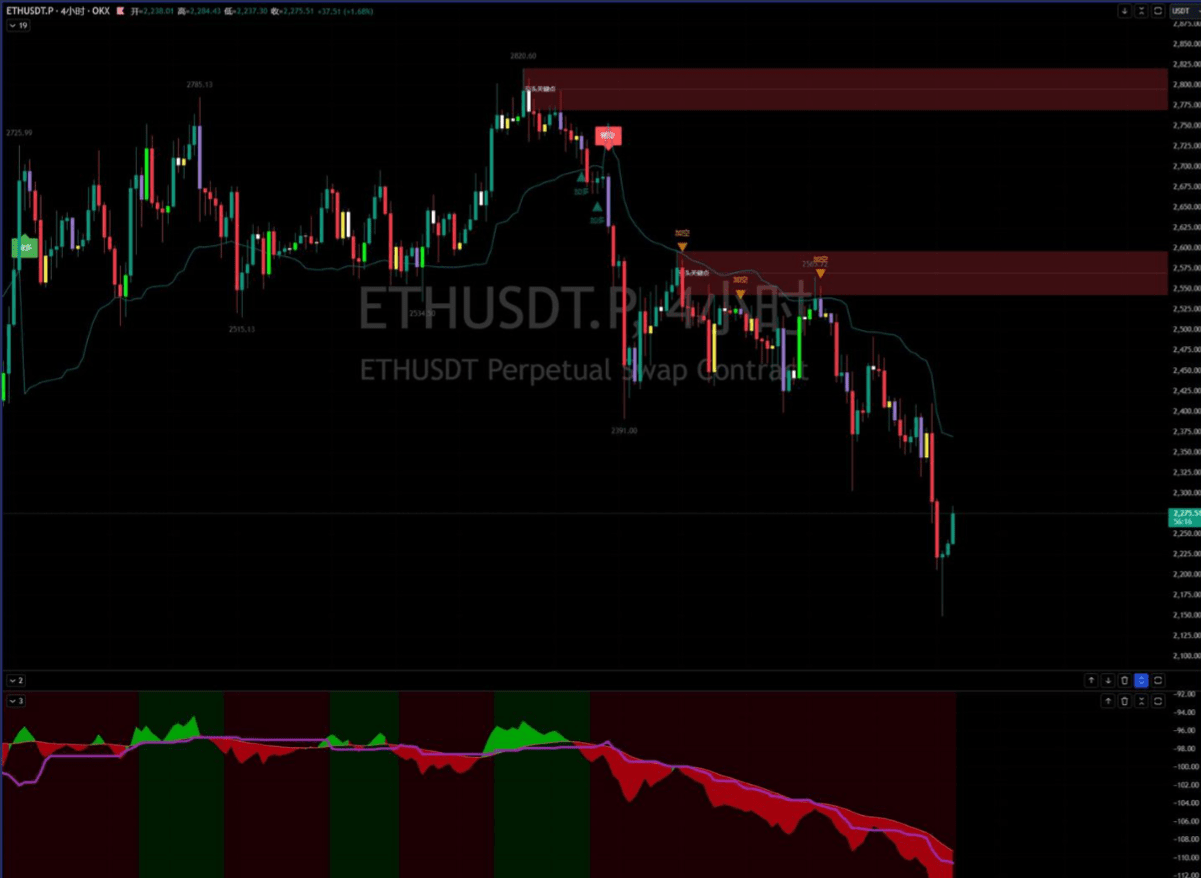
OKEx ETH perpetual contract, 4-hour market trend, large cycle volatility breakout strategy, make friends with time to amplify profits
Volatility breakout strategy
It is a quantitative trading method that captures trends by capturing abnormal expansion of market volatility. Its core characteristics can be summarized into the following five dimensions:
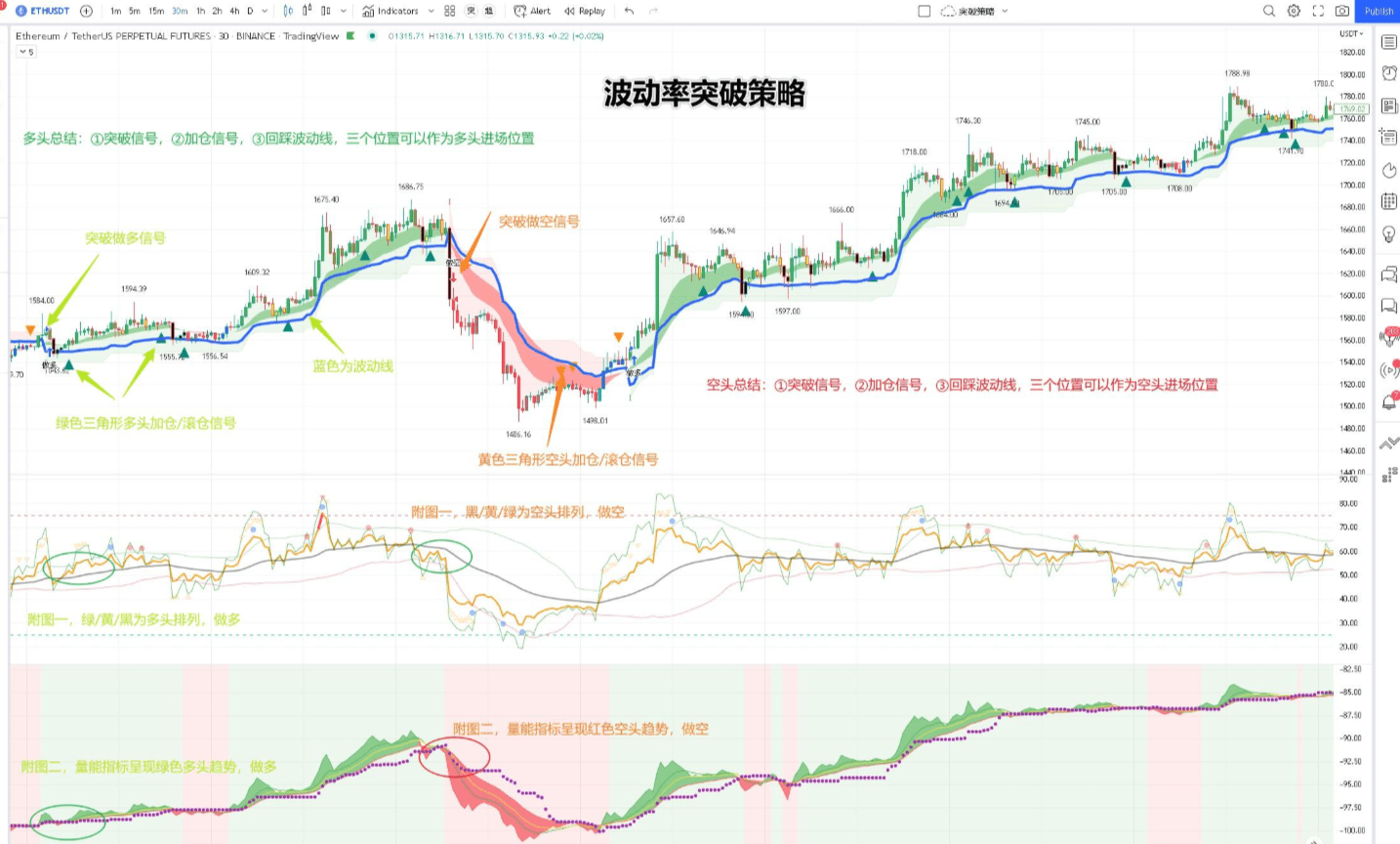
As shown in the figure above, the main chart one is the breakout strategy and the signal to increase positions, which serve as entry signals. Figure one is a dynamic long-short index, which is used to determine whether to lock in profits. Figure two is a volume indicator, which is used to assist in judging trends.
One, Core Operation Mechanism
Volatility Quantification and Dynamic Threshold Setting The strategy calculates the normal market fluctuation range based on historical volatility (such as a 20-day standard deviation), and identifies abnormal fluctuations by setting dynamic thresholds (such as 1.5 times the historical average fluctuation). When real-time volatility exceeds the threshold, a trading signal is triggered. For example, combining ATR verification of the breakthrough amplitude ≥1.2 times ATR in the Bollinger Channel breakthrough significantly improves the signal validity.
Multi-Level Signal Verification System Advanced strategies often incorporate multi-dimensional verification:
Trend Filtering: Use EMA dual moving averages (such as 50/200 periods) to confirm the main trend direction
Momentum Verification: Combine RSI overbought and oversold areas (RSI<30 or >70) to judge reversal potential
Pattern Confirmation: Need to match hammer line, morning star and other K-line reversal patterns
Volume Support: The trading volume needs to be enlarged to more than 1.5 times the 20-day average volume during the breakout
Two, Strategy Advantages
High Profit-Loss Ratio and Event-Driven Adaptability It performs prominently in sudden events (such as central bank decisions and geopolitical conflicts). The crude oil futures case captures a $9 wave profit, which is 3 times higher than the traditional strategy. The profit-loss ratio often reaches 3:1, because the stop loss is based on the ATR dynamic setting (such as 1.5 times ATR), and the profit target is anchored to the volatility expansion range.
Adaptive Market Environment: Cope with different volatility states through dynamic parameter adjustment:
Shorten the EMA cycle to 12 days in the high volatility period, and tighten the Bollinger Band standard deviation multiple to 1.5
Use "volatility anchoring" in the low volatility period, and the position size is inversely proportional to ATR (if the volatility rises by 10%, the position decreases by 15%)
Set parameters for different scenarios, such as ATR(14)+k=2.0 for intraday trading and ATR(28)+k=3.0 for long-term holding
Multi-market applicability Verified for:
High Volatility Varieties: Bitcoin, crude oil (annualized volatility > 40%)
Stock Index Futures: S&P 500 strategy win rate 68%, Sharpe ratio 2.3
Foreign Exchange Market: Euro/Dollar breakout verification system eliminates 82% false signals
Three, key optimization directions
1, Volatility State Identification System
Compression Period Warning: Start breakout preparation when Bollinger Band width/ATR<0.6
Rising Wave Cycle Capture: Combine VIX index with implied volatility percentile (<30% percentile to build a position)
Dual-Mode Switching: Add TD sequence filtering in normal mode, and use news API to trigger in event mode
2, Non-linear stop loss mechanism
Initial stop loss 1.5 times ATR, tighten to 0.8 times after profit exceeds 2 times ATR
Use volatility cone analysis for the S&P 500, and set different stop losses for different quantile ranges
In the options straddle strategy, use the vega value to monitor the volatility premium, and forcibly leave the market when the premium loss exceeds 30%
3. Multi-factor Resonance Verification 3. Multi-factor Resonance Verification
Factor type verification indicator effective conditions term structure futures discount rate > 0.5% to improve the effectiveness of the breakthrough by 23% Market breadth The proportion of constituent stocks breaking through The proportion of constituent stocks in the Shanghai and Shenzhen 300 breaking through synchronously Capital flow The change in the open interest of the main contract increased by more than 15% when breaking through
Four, Comparison of typical application scenarios
Scenario Type Strategy Performance Optimization Focus Case Policy Impact The explosive nature of revenue is strong (200 points/day) Shorten the signal confirmation cycle to 15 minutes ECB interest rate decision Euro break Trend initial Profit-loss ratio > 5:1 Widen the ATR multiple to 2.5 The copper price breakthrough caused by the copper mine strike Volatility compression The highest signal quality Add option volatility smile analysis US stocks break through after 3 months of sideways fluctuation Liquidity trap Win rate <40% Start volatility mean reversion model Treasury futures false breakthrough
The essence of this strategy is the "resonance art of volatility and trend momentum". In the mainstream market from 2020-2025, the Sharpe ratio of the optimized hybrid strategy can reach 1.8-2.5.
How to use a volatility breakout strategy for effective trading?
One, use the volatility breakout strategy to trade intraday contracts. The advantage is that it can be bought in time when the stock price breaks upward, confirm that your trading direction is correct, and simplify the complexity of trading decisions. However, this strategy also has some shortcomings, such as being prone to buying at the top of the mountain and identifying and responding to false breakouts. Therefore, traders need to have better trading skills and risk control capabilities.
Volatility fluctuation breakout strategy: win rate is about 70%, profit-loss ratio is 2.37. If the execution can keep up with the strategy signal, the income is still very good.
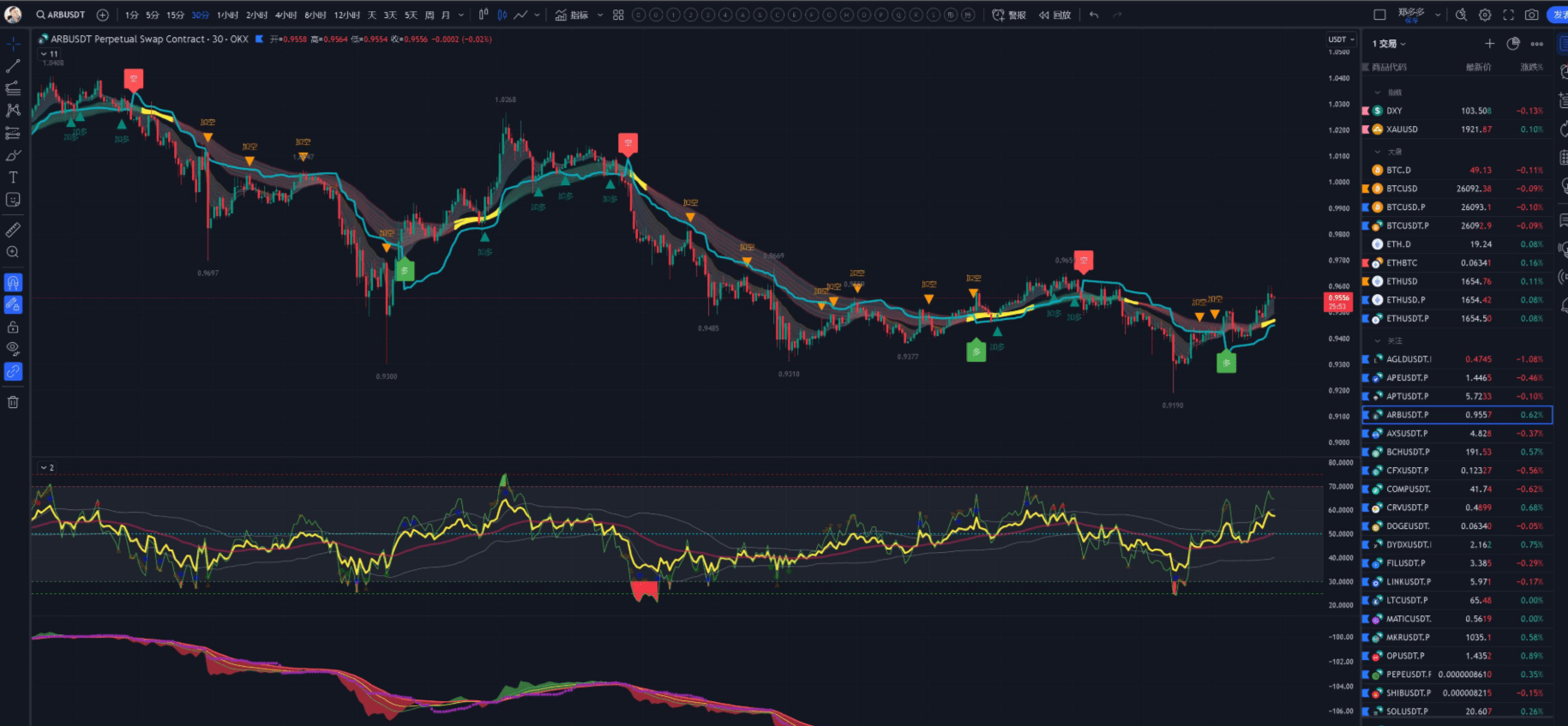
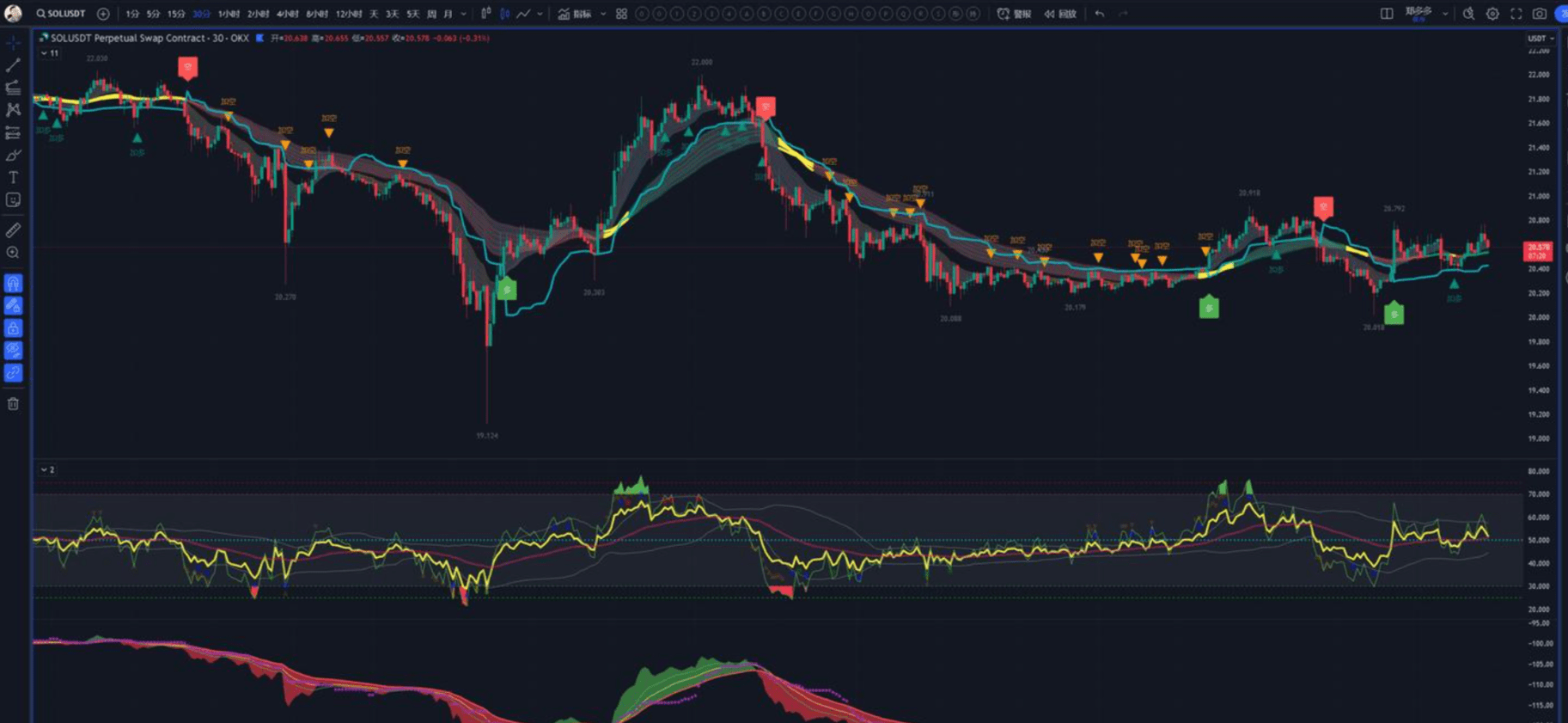
Two, use a volatility breakout strategy to scale into large cycle trend trades. As shown in the figure below, scaling in signals under large cycles provide good entry positions for scaling in.
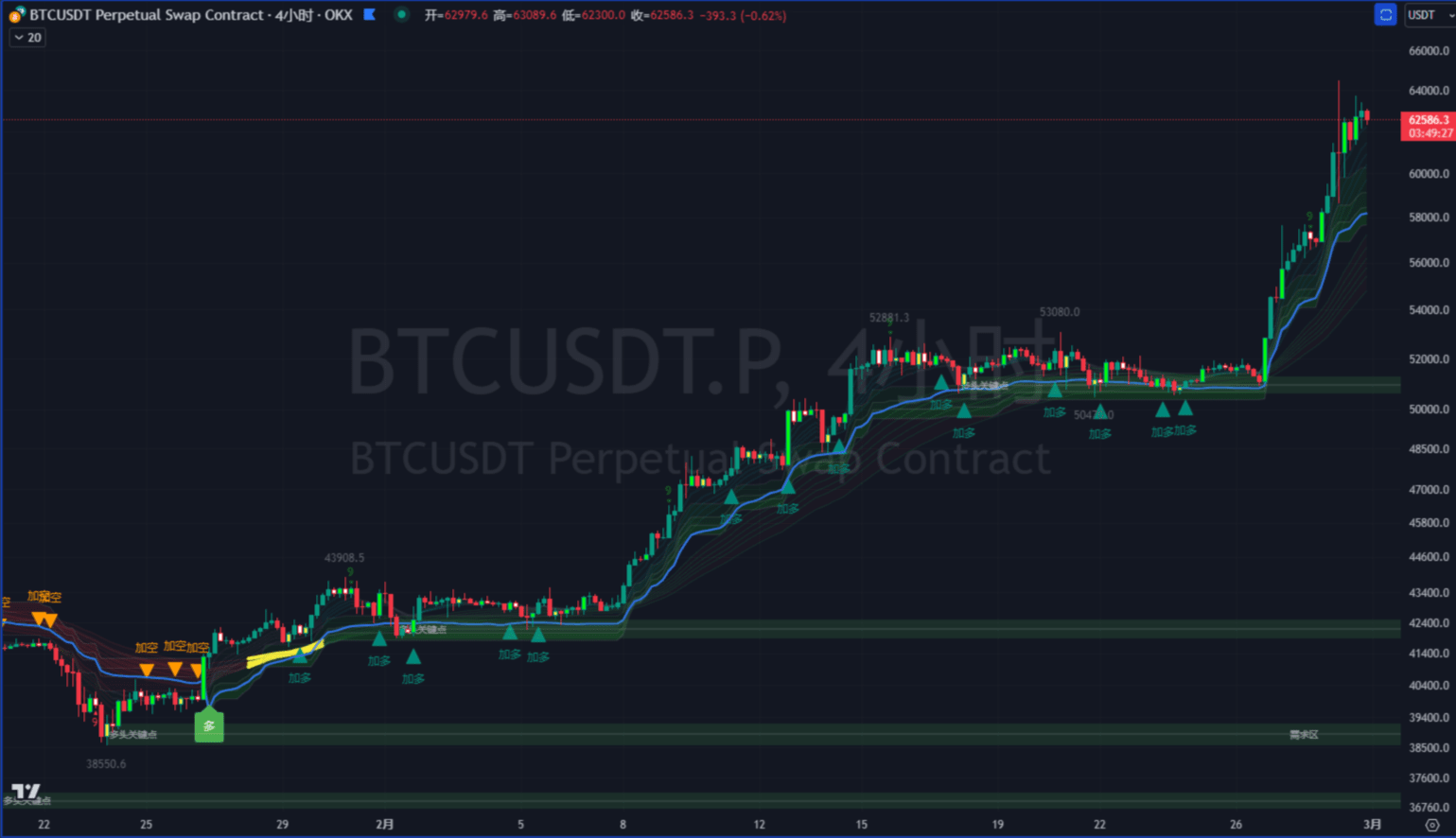
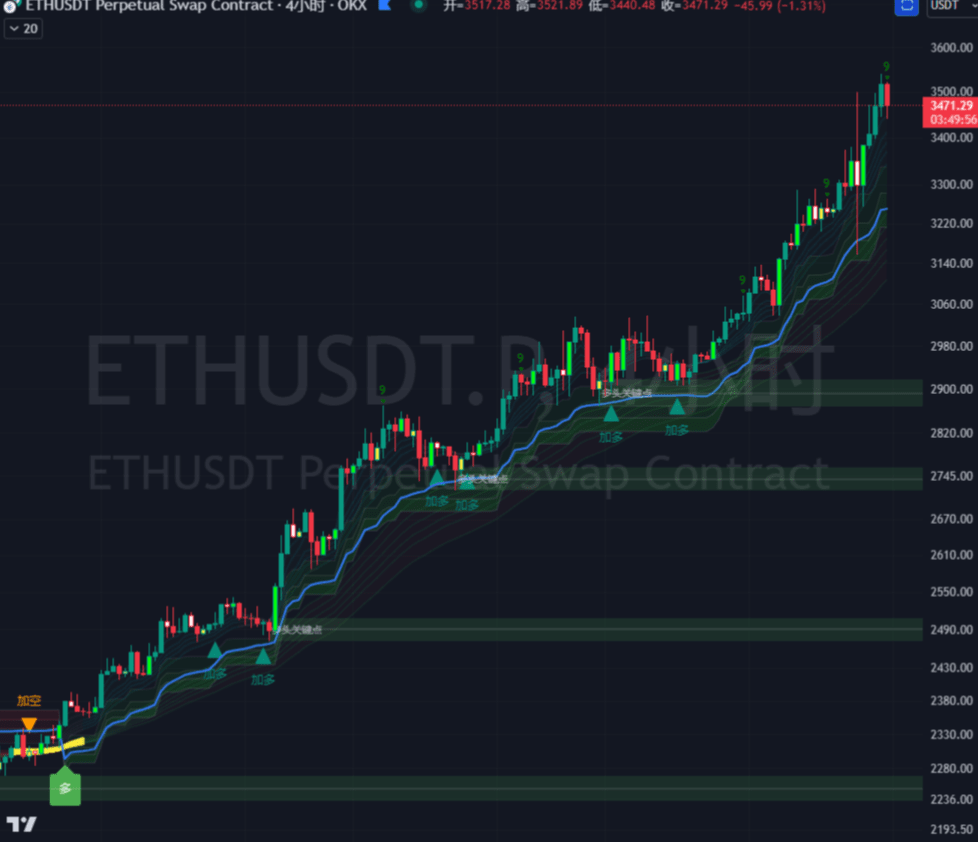
Changing fate against the sky——The theoretical basis for rolling position trading using volatility breakout strategy
One, three applicable scenarios for scaling in
Rolling positions sounds scary, but in other words, adding to floating profits is much better to say, adding to floating profits is just a common technique for futures trading.
You don’t have to maintain 5~10x leverage, just two or three times, what you want is to add to the floating profit to always maintain the total position two or three times, it is still relatively safe to play Bitcoin, there are only three situations suitable for rolling positions:
The choice of direction after a long period of sideways fluctuation volatility hits a new low
Buying the dip after a big rise in a bull market
Breaking through major resistance/support levels at the weekly level
Success is more likely only in these three situations, and all other opportunities should be abandoned.
(Reminder: Only play futures with money you can afford to lose.)
Fat House View:
Give a definition to rolling positions: In a trending market, after making a large profit with leverage, the overall leverage passively decreases. In order to achieve the effect of compounding profits, the trend position is increased at the appropriate time.
The process of increasing your position is called scaling in.
According to the definition, "appropriate time" means there are mainly two scenarios:
1. Add positions in the convergence breakout market in the trend, and quickly reduce the increased positions after breaking through to eat the main rising wave.
2. Add to trend-following positions during pullbacks in a trend, such as buying in batches at the moving average.
Two, Money Management
Trading is not full of risks, and risks can be resolved through money management. For example, for me, the futures account is 200,000 US dollars, and the spot account is randomly from 300,000 US dollars to 100W+ US dollars. If there is a big opportunity, I will recharge more, and if there is no opportunity, I will recharge less.
If you are lucky, you can earn more than 10 million RMB a year, which is completely enough. If you are unlucky, the worst case is that the futures account is exposed, which is okay. The spot income can make up for the losses of the futures liquidation. If you make up for it, then rush in again. Can't you earn a penny a year from the spot? I'm not that bad.
I can't lose money, so I haven't been liquidated for a long time, and I often earn a quarter or a fifth of my futures profits and save them separately. Even if I run out, some of the profits will remain.
As an ordinary person, my personal suggestion to you is to take one-tenth of your spot position to play futures. For example, if you have 300,000, take 30,000 to play. If you lose it all, use the profits from spot to replenish it. When you have lost ten or eight times, you can always figure out something. If you still haven’t figured it out, don’t play. It’s not suitable for this industry.
Three, the risk of rolling positions
Let’s talk about rolling positions. Many people think this is risky. I can tell you that the risk is very low, much lower than the logic of opening orders for futures you play.
If you only have 50,000, how to start with 50,000, first of all, this 50,000 must be your profit, if you are still losing money, don't read it.
If you open a position at Bitcoin 1W, set the leverage to 10x, use the isolated margin mode, and only open 10% of the position, which is only open 5K yuan as margin, this is actually equal to 1x leverage, 2 points stop loss, if you stop loss, you only lose 2%, only lose 2%? 1000 yuan. How did those people who were liquidated get liquidated? Even if you are liquidated, it only loses 5K, right? How can you lose it all.
If you are right and Bitcoin rises to 1.1W, you continue to open 10% of the total funds, and also set a 2% stop loss. If you stop loss, you still earn 8%. What about the risk? Isn't it said that the risk is very high?
And so on. . . .
If Bitcoin rises to 15,000, and you successfully scale in, you should be able to make around 200,000 from this 50% move. Catch two such moves, and that's around 1 million.
There is no compound interest at all. 100x is earned by 2 times 10x, 3 times 5x, and 4 times 3x, not by compounding 10% 20% every day and every month. That's nonsense.
This content not only has operational logic, but also contains the core inner skills of trading. As long as you understand position management, it is impossible for you to lose everything.
This is just an example. That's the general idea. Specific details require more thought.
The concept of rolling positions itself has no risk. It not only has no risk, but also is one of the most correct ways of thinking about doing futures. What is risky is leverage. 10x leverage can be rolled, and 1x can also be used, and I generally use two or three times. Isn't it the same as dozens of times the return if you catch it twice? If it's not good, you can use 0. A few times, what does this have to do with rolling positions? This is clearly your own choice of leverage. I have never said that you should operate with high leverage.
And I have always emphasized that I only invest one-fifth of my money in the currency circle, and at the same time only invest one-tenth of the spot money to play futures. At this time, the futures funds only account for 2% of your total funds, and the futures only use two or three times leverage, and only play Bitcoin, which can be said to reduce the risk to a very low level.
Would you be upset if you lost 20,000 out of 1 million?
It's always boring to be arguing. People keep saying that rolling positions are risky and that making money is just good luck. I'm not saying this to convince you. There's no point in convincing others. I just hope that people with the same trading ideas can play together.
It's just that there is no filtering mechanism currently, and there are always harsh voices appearing, interfering with the recognition of those who want to see it.
Four, trading principles
There is a very important principle in trading: don't make small money, don't lose big money.
Simple 8 words, but very difficult to do, for example:
You open a position with 20,000, and it immediately rises to 21,000. You're happy, take profit, and make a sweet 5%. But the market keeps rising to 25,000... You made 5% but missed out on 50%.
Then you warn yourself to make a lot of money, and this time you will never take profit. Then the market returns to 20,000, and you open another order. After opening, it rises to 21,000 again. You warn yourself to learn from the last lesson and hold on to make a lot of money. As a result, the market returns to 20,000 and even breaks below 20,000 to 19,500. You stop loss.
I'm so hard!
Many people are constantly switching in this dilemma throughout their lives and never get out.
Is there a way to make money in both big and small markets?
No, one of the two must be chosen, I generally choose not to make small money.
I can't do all of these things 100%, and nobody can. But I can tell you the correct concepts. How much you can do depends on your personal cultivation. We can each only achieve a certain percentage of these concepts. Try to improve this percentage as much as possible.
Five, scaling in trading mindset
Whether you're a short-term or long-term trader, make 200% in a big move, and as long as you maintain most of the profits, you can make another 200% in the next big opportunity, which is four times... As long as you can preserve the profits, you can compound. If you make 200% this time and then lose it all back, what's the point? There's no such thing as missing out in the trading market, only losing and winning.
Some people may feel that they have found the right path and feel that they are about to get rich.
Finding the right path only increases your probability of making money.
In fact, this kind of operation has high requirements for mentality, patience, and courage.
1. Are you willing to wait patiently for a good position?
2. Would you rather miss an opportunity than make a mistake? When holding a position with a significant profit, do you dare to forgo the profit to continue holding?
3. Can you be bold enough to open a position regardless of the principal, even if it is lost?
The anxiety of missing out, the urgency of taking profits after profitability, the worry about losses after opening a position...
It takes a long time to cultivate, and you must be cautious if you want to play, and you must try to profit.
Of course, finding the right path is much better than those who play blindly. Many people never find the path in their lives.
Six, the core of making big money in the crypto world
In the crypto world, try to make 1 million first. If you only have tens or hundreds of thousands, tinkering with it every day is pointless. Better to focus on your day job. This means earning 1 million through trading, not investing 1 million. Without sufficient knowledge, even investing 10 million will result in losses.
Only when you have 1 million, your perspective on trading and life will be different, because once you have 1 million principal, even if you double your spot position in a year, you will have 1 million profits. In a first-tier city, with a house, an annual income of 1 million can reach the top class in China, and it is impossible for an ordinary person to spend it all.
It only takes 50,000 to earn 1 million, and this 50,000 can also be risk-free. You can invest 100,000 first, and then wait for an opportunity for the currency circle to kill retail investors. You go in to buy spot and earn 100,000 profits, and then use 50,000 of the 100,000 profits to bet. If you want to make a lot of money, you must gamble. When a good opportunity appears, use two or three times leverage to roll out one or two times.
If you lose 50,000 profits in a bet, then invest another 50,000 to bet. Once all the profits are bet, stop and continue to earn profits with 100,000 principal to bet.
Easier said than done, but it requires unimaginable patience.
This model allows you to potentially get rich in the crypto world without the risk of massive losses. Don't believe in just holding coins. Without sufficient off-market earning ability, holding coins is just a scam for retail investors. It's ridiculous for you to hold a few Bitcoins when others are holding 100. Bitcoin's volatility has decreased significantly, requiring leverage for the possibility of getting rich. Those who held coins two years ago have just broken even, and dollar-cost averaging won't yield many multiples even at the peak of a bull market. Specific scaling in records:
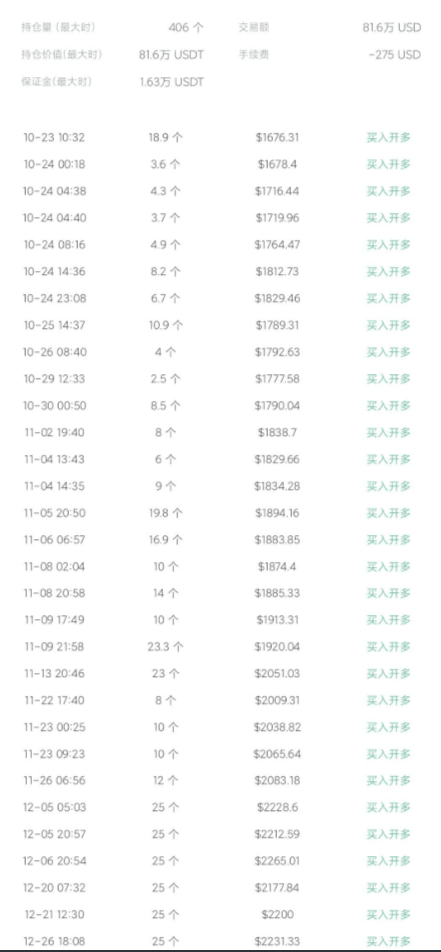
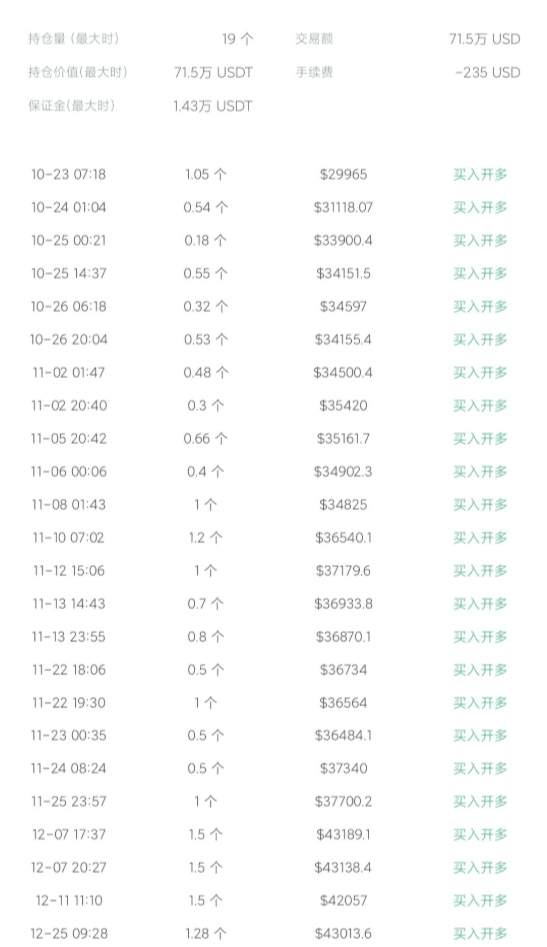
Time is the only currency. Wherever your attention is, that's where your wealth will be! #滚仓战神
BTC BEH


